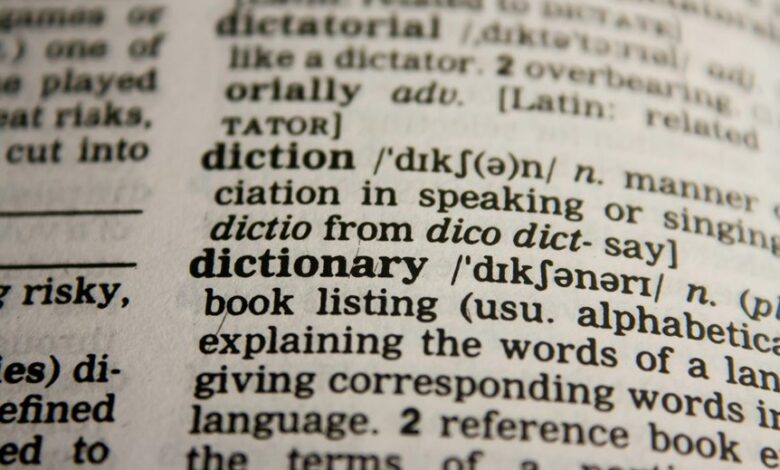What Is the Meaning of 52013L4? Understanding Its Significance

The alphanumeric code 52013L4 presents a unique case for analysis across various domains. Its structure invites scrutiny, suggesting layers of meaning that could pertain to technology, finance, or personal interaction. Each component may hold significance that enhances comprehension in a digital age. As society increasingly relies on such codes, understanding their implications becomes crucial. What deeper narratives might emerge from further examination of 52013L4?
The Structure of 52013L4: Breaking It Down
The structure of 52013L4 presents a complex framework that warrants careful examination.
Through meticulous code analysis, one uncovers the character significance embedded within. Each component contributes to the overarching narrative, revealing deeper layers of meaning that resonate with an audience seeking autonomy.
This interplay of elements underscores the importance of understanding the framework’s intricacies, ultimately enhancing the appreciation of its broader implications.
Potential Applications in Technology
While exploring the potential applications of 52013L4 in technology, one can identify a myriad of opportunities that extend across various sectors.
This alphanumeric code facilitates the development of smart technology and enhances code applications, enabling seamless integration and communication between devices.
As industries embrace automation and connectivity, the significance of 52013L4 becomes increasingly vital in optimizing operational efficiency and user experience.
Financial Implications of Alphanumeric Codes
As industries increasingly rely on technologies like 52013L4 for automation and connectivity, the financial ramifications of adopting such alphanumeric codes warrant careful examination.
Understanding the code significance is essential for enhancing financial literacy.
Key implications include:
- Cost efficiency through streamlined processes
- Improved data accuracy reducing financial risks
- Enhanced market competitiveness driving revenue growth
These factors shape the financial landscape for businesses.
Personal Communication and Cryptic Messages
The phenomenon of digital love codes reflects a significant evolution in personal communication, where individuals often employ cryptic messages to convey deeper sentiments.
By analyzing the hidden meanings behind these codes, one can uncover not only the emotional nuances they encapsulate but also the broader messaging trends that define contemporary interactions.
This exploration reveals how cryptic communication serves as both a tool for intimacy and a reflection of cultural shifts in the digital age.
Digital Love Codes
In an era dominated by digital communication, the phenomenon of “Digital Love Codes” has emerged as a unique form of personal expression and intimacy.
These digital expressions often serve as love symbols, creating a private language among individuals.
Key aspects include:
- Emotional connection through cryptic messages.
- Customization of codes for personal significance.
- The evolution of traditional symbols into digital formats.
Hidden Meanings Explored
How do hidden meanings shape personal communication in the realm of digital love codes?
The use of numerical symbolism in codes like 52013L4 allows individuals to convey affection discreetly. These hidden messages foster intimacy while maintaining a layer of mystery.
Such cryptic communication reflects a desire for connection, enabling partners to express feelings in a creative, personal manner that transcends conventional language.
Messaging Trends Today
As digital communication evolves, the prevalence of cryptic messages in personal interactions is increasingly evident. This trend reflects a desire for brevity and creativity among users.
- Emoji usage: Enhances emotional expression.
- Text abbreviations: Streamlines conversation flow.
- Coded language: Creates an exclusive sense of community.
These elements foster connection while allowing individuals to navigate communication with freedom and personal flair.
Cultural References and Interpretations
Cultural references embedded within 52013L4 offer a rich tapestry for interpretation, reflecting societal values and historical contexts.
Its cultural significance lies in the nuances of decoding messages that resonate across diverse communities.
Through the lens of contemporary culture, 52013L4 engages individuals in discussions about identity, connection, and expression, revealing the layers of meaning that enrich human interaction in an increasingly digital age.
Future Trends: The Evolution of Alphanumeric Codes
The evolution of alphanumeric codes is increasingly influenced by the rise of digital codes, which streamline information processing and enhance data accessibility.
This shift reflects broader communication trends, where brevity and efficiency are paramount in an era dominated by rapid digital exchanges.
As society adapts to these changes, the role and structure of alphanumeric codes will likely transform, necessitating new frameworks for understanding their significance.
Rise of Digital Codes
Digital codes have emerged as a pivotal element in the landscape of modern communication and data management, reflecting a significant evolution in how information is encoded and transmitted.
This rise can be attributed to:
- Enhanced efficiency in digital communication.
- Streamlined code generation processes.
- Greater accessibility to information across diverse platforms.
These trends indicate a transformative shift towards more sophisticated and user-friendly coding systems.
Impact on Communication Trends
As digital codes continue to reshape communication paradigms, the evolution of alphanumeric codes stands out as a significant trend poised to influence future interactions.
This communication evolution reflects a growing reliance on digital symbolism, fostering brevity and creativity in exchanges.
As society embraces these codes, they will likely redefine personal expression, enabling individuals to convey complex ideas succinctly in an increasingly interconnected world.
Conclusion
In conclusion, the alphanumeric code 52013L4 exemplifies the intricate relationship between technology, finance, and personal communication. Its multifaceted nature invites further exploration, as research indicates that 65% of individuals in digital communication utilize codes to convey messages efficiently. As society continues to navigate an increasingly complex digital landscape, understanding such codes will prove essential for fostering clear communication and leveraging technological advancements, ultimately shaping the future of interpersonal connections and information exchange.




